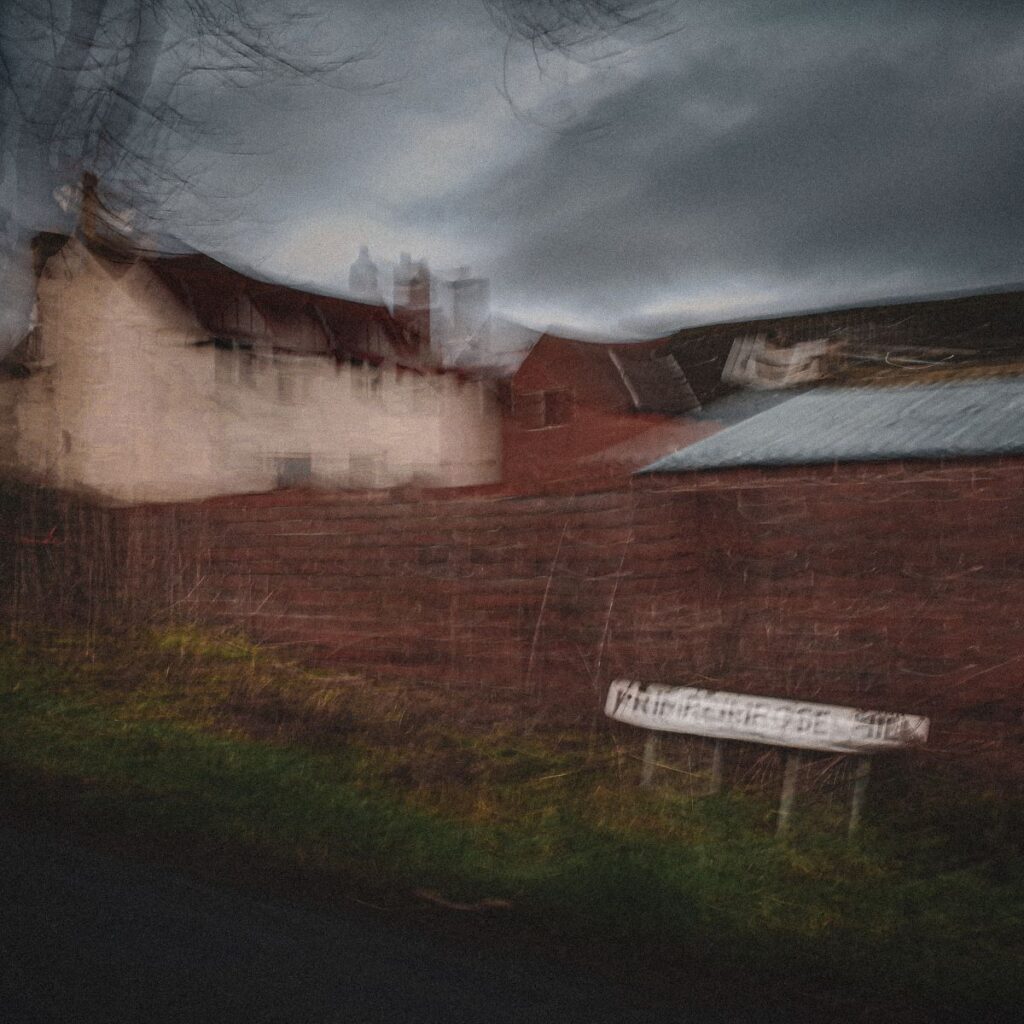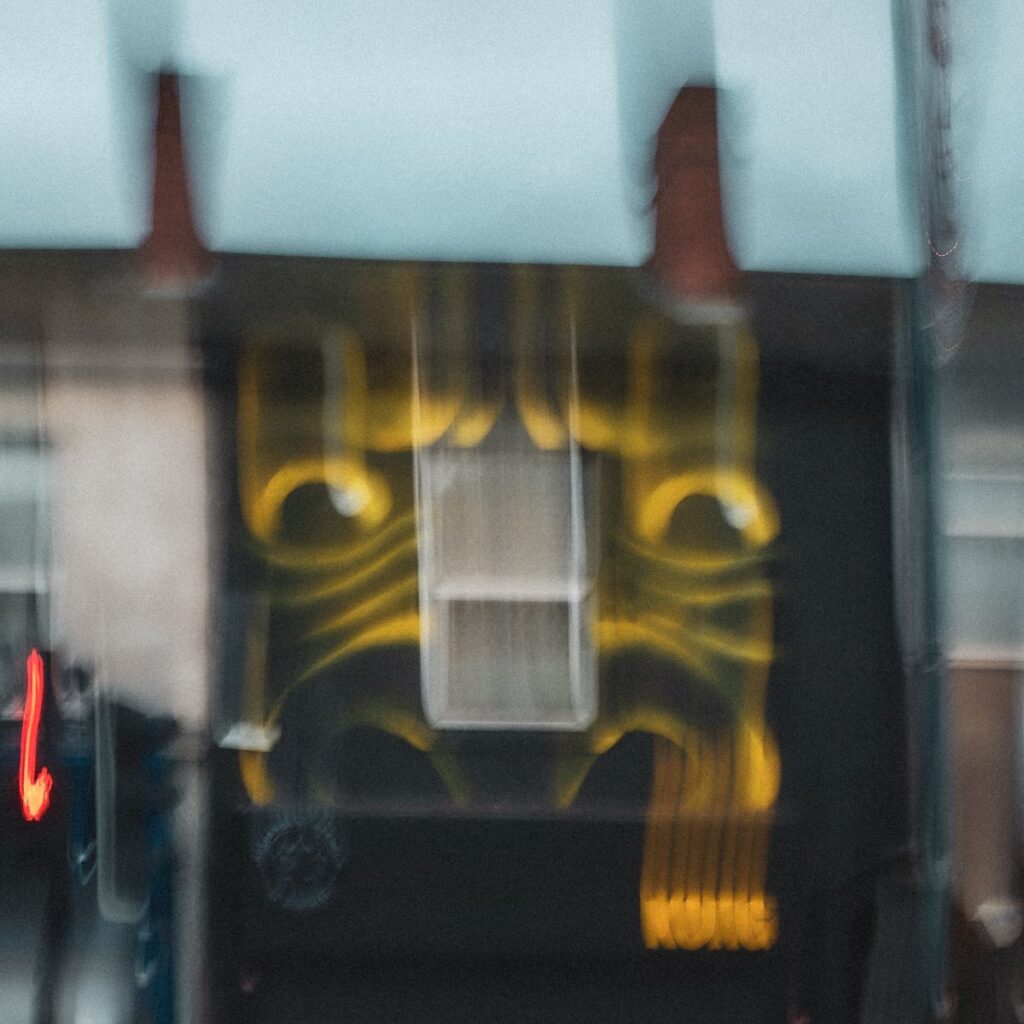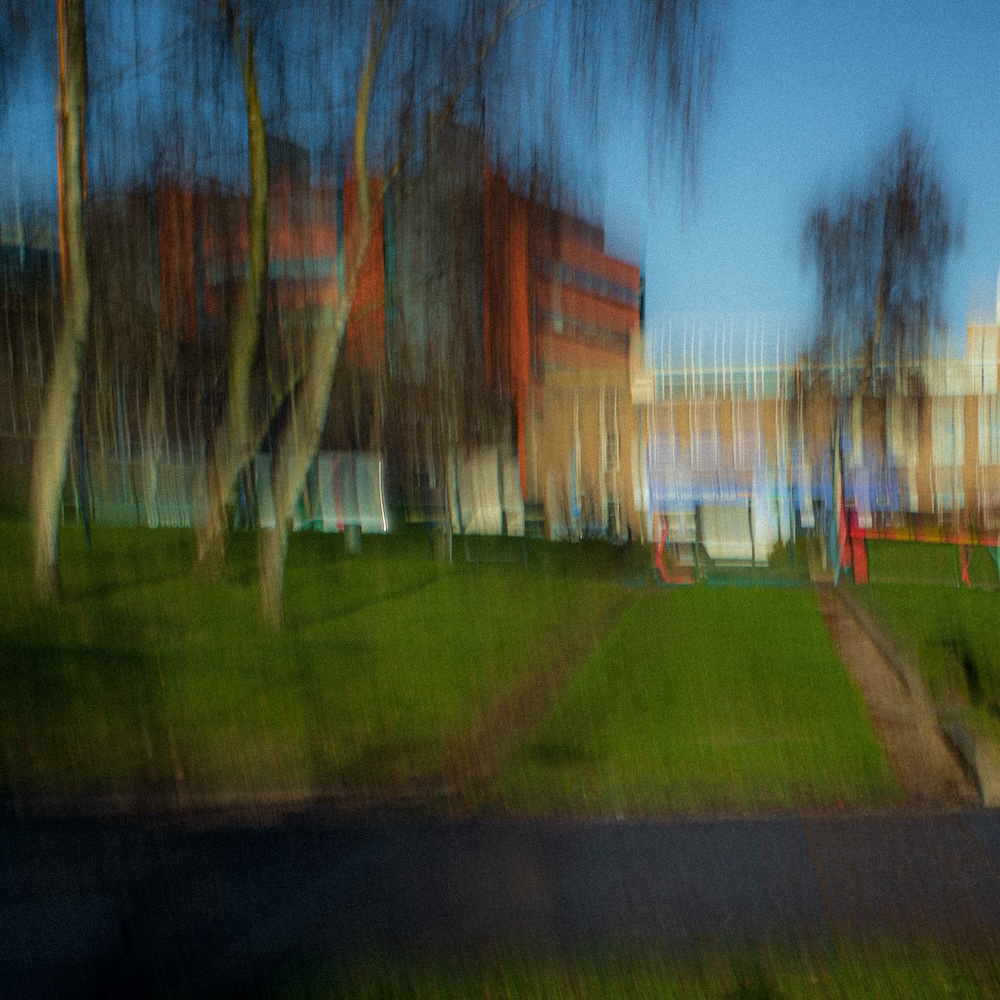I am walking Brum’s oldest known road, a Roman Salt-way, Icknield Street (also called Ryknild). From the city’s southern margins to its northernmost reaches, I am tracing the route of this ancient track in three sections. This first walk is from Hawkesley in the south, through to the Roman camp at Metchley, the earthworks of which lie on high ground in the surroundings of the Queen Elizabeth Hospital in Selly Oak.
I begin on Icknield’s darkest stretch, amidst the old hills of north Worcestershire near the auspiciously named Grimpits Farm in Wythall. I spent a lot of my teenage years hanging with friends around these parts, drinking, smoking, larking about like many a youth, hazy days, when the world seemed brighter and everything was possible. The road here is narrow and sinuous, snaking its way up the rising escarpment like a primordial serpent, wreathed by ancient hedgerows and forgotten histories.

It’s easy to lose yourself down here. I find myself drifting through the happiest memories, wandering uphill as the sun glimmers through unkempt hedgerows and nervous thickets populated by blackthorn, hazel, ash, and oak. The outskirts of Hawkesley lie yonder on Primrose Hill. I fall into conversation with a local, fishing for attention, he’s a metal detectorist and conspiracy theorist it seems. He speaks enthusiastically of the Roman coins he’s found here, stamped with the imperious profiles of Marcus Aurelius and Hadrian. His aspect darkens as he details his attempts to get permission to gain access to local fields that flank this stretch of the salt-track, he suspects they may harbour secrets of a lost Anglo-Saxon waystation. He mutters darkly about landowners not wanting people prying on their land, sniffing out their illicit greenhouse crops. “It’s an ill weed that blows”, he grins toothily, waggling his detector like a spliff.

Along this darkened road, I’m taking blurry, slow-shutter photos of scenes that I encounter. I hope this reflects how the route and our collective memory of the road has been lost, worn away by the footsteps of time. This erosion of memory has personal echoes, this road is drift through my own personal history, the roots of Icknield Street run deep in my family. Time moves unerringly onward, discarding the transient, making the permanent seem ephemeral. This journey is important to me, a pilgrimage of sorts, touching the heart of what I’ve lost. The solidity of my world was shaken asunder when my Dad, Patrick, passed away suddenly last year. He was born and grew up in one of back-to-back courts, just off a stretch of Icknield Street, where the memory of it surfaces (allegedly) in Ladywood, central Birmingham.
I cross the City limits into Hawkesley, where the road suddenly forgets itself, becoming Walkers Heath and then Broadmeadow Road, sashaying along the southern ridgeline toward Kings Norton. These rough edgelands, a mix of golf courses, care villages and catteries, wash up against the white cliffs of concrete tower blocks, the road cutting between like a scar. Like the Anglo-Saxon God of War, it’s a bit Grim, threadbare nature in an unwinnable conflict against the dissolutions of Man.

A ramshackle assembly of farm buildings, tucked in behind the council cemetery, long derelict and abandoned, someone set fire to it last week. The guy who lived there was (long rumoured to be) an SAS commando back in the day, he was one of the soldiers who stormed the Iranian Embassy back in ’81, “grenade!”. He would watch his amply stocked fishponds like an avid hawk, eager to make a killing off the locals by charging for fishing access, whilst menacing those who didn’t pay with eager fists and a sawn-off shotgun. I don’t linger long, this area’s rep’ makes me twitchy, and there are strange noises emanating from that burnt-out barn……

The Road crosses over the top of Parson’s Hill, becoming Lifford Lane at the back end of Kings Norton, where industrial units bump gums against gnashing rows of terraced housing, jostling for primacy, gasping for air…… Breathing my beloved in, Breathing, breathing her nicotine, breathing, Breathing the fall-out in…….. You can smell the council tip long before you see it, the air around the road feels chewy with particulates. These conflicting edges, imposed by us are dirty and fascinating, gleaming allotment greenhouses glare uneasily across the ever-busy road at the noisome dump. The irradiated air is thick with Ravens and Gulls, eager to take their pick of the leavings.

At the brow of Lifford Lane, Icknield Street once flowed beneath, it’s under here somewhere, beneath the road, beneath the old rail line and the canal, the salt track is here, I can feel it! The northerly route that I’m following is a best-guess, an approximation of where Icknield Street once tracked, based on the oft-disputed opinions of eminent historians and local diarists. I’m looking for a road that may not even be there, following a likelihood, listening for topographic rumours hidden amidst unreliable texts and tucked in somewhere beneath my feet.

The road loops over the old rail and canal bridge on what was Stirchley Street, now the Pershore Road. The traffic is heavy and boorish as more memories flood my senses. It’s a bittersweet nostalgia for dead shops, old friendships and departed family, a lost Stirchley from my childhood. My Dad used to walk us up here on Saturdays, visiting the cake shop before strolling up through Cadburys to watch model yachts and steamships bobbing about on the lake. These days Stirchley is shabby chic, popular with the hipsters in their denim aprons and tote bags. I don’t have much truck with it, but the beer’s alright.


The ghosts of Icknield Street draw me close to Dad’s house and his old haunts, the Co-op where he shopped (now a Morrisons) or the café where he breakfasted, supping weak tea as he did his bingo. I’m a bit windswept and misty eyed, I find walking induces a kind of hypnotic reverie, where memory, dreams and misremembered stories, blend like the confluence of many rivers. Memories of my Dad flow like his laugh into his stories of people and places that have been lost or that I’ve never seen, giving room for imagination. Much like the route of the road, the stories of Dad’s early life have become fragmented in the re-telling and as I have gotten older, I’ve found to my cost that over time even my ‘memories are uncertain friends’.

I turn onto Umberslade Road, heading up hill. There was a huge dairy here when I was a kid, it’s a car park these days, much like everything else it seems. The road climbs sharply towards the Studentville of Selly Oak, past Muntz Park and the old Dell where I had my first kiss, her mushy lips tasted like cola cubes…. I’m a stone’s throw from Dad’s old house. I did a paper-round up here, Cherrington and Gristhorpe Roads, always good for Christmas bonuses and chocs. Most of the roads around here are populated with Edwardian terraces, parallel lines of tightly knit red brick homes, huddled like limpets on the landscape.
I wonder if patrolling legionnaires felt something akin to me as they neared home, at the junction with what is now Raddlebarn Road, a clearing through the gathered woodland there would, perhaps, have afforded views across the valley to the fires of home burning bright at Metchley Camp. Below them, a wide fertile prospect of arable fields and grazing livestock. Today, Heeley Road offers the most likely alignment of the Roman road, edging downhill into central Selly Oak, glad-handing with the A38 by the Bristol Pear. These days it teems with different crops, wheelie bins lined up in cornrows around rusty skips full of undergrad cast-offs, HMOs for the herds, the livestock guzzling their San Miguels down the Goose.

Dad’s absence hangs heavy over me around here, memories of his presence are palpable everywhere I look. Grief is complicated and fractured, full of one-sided conversations and unrequited wishes. His adherence to Catholicism and my own rejection of it was the source of many disagreements. But still, as I walk, I find myself softening, my eyes drenched in those places that remind me of him and his story. Dad was well known around the Parish, Nuns were always at our door, beatific foot soldiers of the Legion of Mary, brandishing her statue like a holy weapon. They terrified me, do they even have feet??? He was Pat the Painter, 50 years a decorator, man and boy. The homes and tower blocks he worked on, the churches he worshipped in, the shops he favoured, the memories he inhabited, they’re all here, looking back at me as I walk the Road. My reasons for tracing the roman route have belied this deeper need within me, I suppose. Deeper than merely documenting a lost road, I’ve ended up taking a final journey, hand in hand along a darker route, the ghost road guiding my way.

To get across to Metchley Camp, from what is now the A38 Bristol Road, the route of Icknield Street would likely have cut straight through Selly Oak, beneath what is now the railway and canal embankments. Any evidence of the road has been lost here, long ago. I am forced to choose a slightly longer route, crossing over the railway line through Selly Oak station, over the road and then down on to the Worcester Canal towpath. This is home turf for me, familiar skin, I live just up the road. The Titanic Caff, the epitome of the greasy spoon truck stop Café, used to hang off the edge of the bridge here, in corpulent defiance of gravity and land hungry developers. For decades it fed weary factory workers from the Birmingham Battery and a plethora of local industries that once thrived around here. Industry and greasy spoons have been washed away, replaced with sky-high factory dorms, pine fresh battery farms brim-full of spoon-fed students. This is the way we live now.

The canal remains, a gentle if sullen companion along the towpath as I leave the road behind me. There the old Dingle runs down to the water’s edge, where drunks and ne’r-do-wells once loitered after closing time, fumbling in the shadows, Friday night knee-tremblers threppence a go. The noise of it all falls away, memories flow into the waters below, washing away such nostalgia. This towpath is a favourite haunt, part of my morning commute. Its familiarity is part of its charm, a quiet corridor of nature and calm. The weather veers between sunshine and showers as I traipse slowly onward in mindful contemplation, a penitent sinner on the pilgrim’s way to Metchley.

On the stairs up to the road by University train station, a disembodied voice proclaims, “alight here for the Queen Elizabeth hospital”. I’ve arrived at last, Metchley Camp. Off Vincent Drive, surrounded by birch trees and covered by meadow grass, the earthworks of Metchley lie quiet, lost in reverie. Passers-by pay little mind to its antiquity, there's places to go and things to do. I walk through the long grass, taking it all in to stand within its walls, listening for buried echoes as the rain falls. The grass is the deepest of greens.
You wouldn’t know there was something ancient, old, buried here. There’s too much else going on. Modern infrastructure dominates the view, there’s the hospital, a medical school, the train station, cranes, construction and the ever busy road dividing the site. The Roman camp was excavated on several occasions during the 19th and 20th centuries, documenting the remains of a once sizable garrison and trading outpost that was, in relative terms, quite short-lived. Later the site was covered over and gently re-landscaped, preserving it for future generations.

A shabby footpath here, which has seen better days, bisects the site at ninety degrees, close to the University bus-stops. It marks the approximate location of Metchley’s main street, the Via Accampamento, perhaps. Today it’s a popular spot for staff and students dining al-fresco on long sunny days, blithely intermingling with the sounds of Roman revelry echoing down through the years.
I kneel, a penitent son, pressing my hands against the path’s surface, a moment of quiet reverence for the road, lost but now found, at Metchley. Standing at last, my knees crackle and pop like Rice Krispies. We made it this far Dad, in nomine patris. As the rain starts to fall, my cheeks are wet in the breeze.
Find out more about Jay's work at his photo website and blog.
